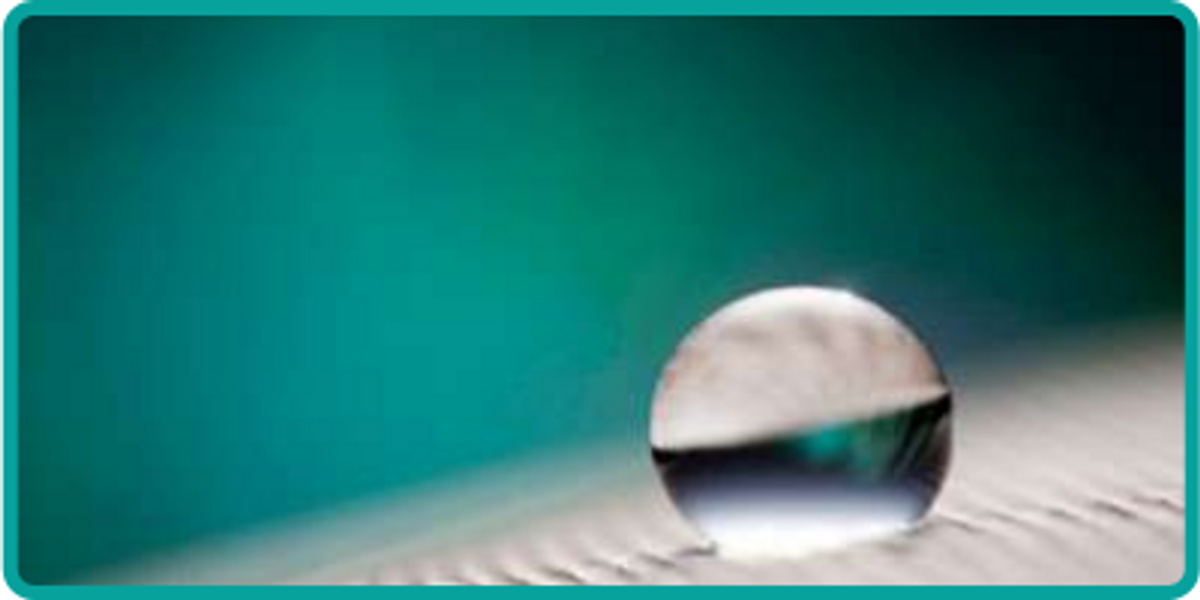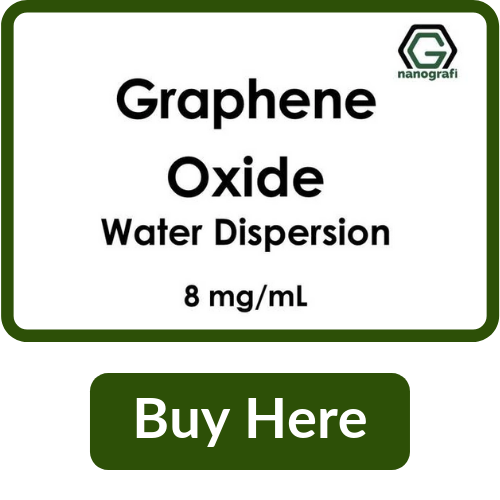Graphene Oxide Dispersion - Nanografi Blog
Graphene oxide refers to a mono-atomic layer material obtained when graphite crystals are oxidized. This is one of the graphene materials that are commercially available because of its ability to dissolve in water which makes the oxidation process suitable. In this article, we will talk about the synthesis, the properties and some of the applications of graphene oxide dispersion in water.
Seven Properties of Graphene Oxide Dispersion
- The properties of a material are defined through its structure, however, this material is very peculiar, since there is no unambiguous model of this material. Graphene Oxide dispersion offers remarkable physical, chemical and mechanical properties that give the opportunity to new applications.
- Graphene Oxide is amorphous, but, in general, graphene oxide can be described as a two-dimensional sheet containing honeycomb carbon atoms with functional groups of hydroxide and oxygen, unlike the graphene model that seeks to completely remove the impurities in a way that maintains the honeycomb shape with perfectly ordered carbon atoms.
- Graphene oxide has several other excellent properties. Electronic properties, such as conductivity, which depends on its chemical and atomic structure.
- Graphene oxide dispersion also has unique optical properties such as photoluminescence, i.e. the emission of light by absorption of radiation. This property can be useful in bio-sensing, in fluorescent labels and optoelectronic applications, as in sensors to detect the light traveling in the optical fiber or in liquid crystal displays.
- Its average modulus of elasticity and the highest resistance to fracture are 32 GPa and 120 MPa respectively.
- Graphene Oxide Dispersion is also ultra-thin and flexible nanostructure, in the form of uniform sheets.
- Graphene Oxide has high solubility and disperses easily in water, as explained below.
Synthesis of Graphene Oxide
In general, there are three main methods by which the Graphene Oxide is synthesized, which are Brodie, Staudenmair, or Hummer. However, these methods are based on the same principle, the oxidation of graphite at several levels. The first two methods perform a chemical reaction through the two compounds, Potassium Chlorate (KClO3) with Nitric Acid (HNO3) to oxidize graphite. However, the Staudenmair method adds Chlorate in multiple stages. This difference in the procedure results in greater oxidation of the graphite and produces CO2 as a by-product.
The Hummer method is the most commonly used since it gives a better homogeneity in the structure of graphene oxide, and also gives a lower range of variation in properties. This method uses two different compounds from the previous reactions: Potassium Permanganate (KMnO4) and concentrated Sulfuric Acid (H2SO4), therefore, this method does not produce CO2 contaminant. Moreover, to prepare the dispersion, Graphene Oxide is mixed with water.
Dispersion of Graphene Oxide in Water
The dispersion of graphene oxide in water is stable with a high content of 1 to 2 layer crystals. It’s suitable for use in different applications, such as preparation of composite materials. Graphene Oxide is easily soluble in water. This ensures that the deposition of a thin film of graphene oxide is very simple.
Eight basic properties of the dispersion are given below:
Solvent: Water
Sheet size: 1-5 μm
Concentration: 0.1-4 mg / ml
Volume: 100/250 ml
Dispersion: Polar solvents
Smell of Graphene Oxide water dispersion: Does not smell
Monolayer content (in 0.1mg / ml): 80%
Color of Graphene Oxide water dispersion: Black / brown
Three Important Applications of Graphene Oxide Dispersion
- Graphene Oxide dispersion is used for making polymer composites such as plastic, resin, rubber, fiber composites, also for anode and cathode materials of Li-ion batteries, graphene thermal conductive layers, catalyst loading and purification of seawater.
- Supercapacitors are electrochemical devices capable of storing a large amount of electric power compared to conventional capacitors, however, they work at lower voltages. In 2009, a publication was published by the Nanjing University of Science and Technology, in which authors exposed the experimentation of creation of supercapacitors based on the use of polyaniline (PANI) doped with graphene oxide, presenting quite favorable results, such as the use of graphene oxide to dope PANI gave results of up to 531 F/g (unit of measurement of the capacity to store energy in relation to the mass of an object), and without the doping of this material the result was 216 F/g. The use of graphene oxide increases the capacitance per unit mass to more than double without doping. This means that this doping can be used in the electronics industry since it always seeks to reduce the space occupied by components with properties similar to those of their successors.
- A team of researchers has been able to manufacture pieces of graphene oxide "paper" of more than 12 centimeters in diameter and with a thickness of approximately between 1 and 100 microns, in which the individual sheets of graphene oxide of micrometric dimensions are stacked one over the other one. The "paper" of graphene oxide is strong, light and flexible. In addition to the superior mechanical properties that the material possesses in the form of individual sheets, the graphene oxide layers are easily stackable, which could be important for the development of other materials. Researchers see a wide variety of applications for graphene oxide paper, including its use in membranes with controlled permeability, and for batteries or supercapacitors intended for use in the energy field. Graphene oxide paper could also be used to create hybrid materials containing polymers, ceramics or metals, where such compounds would behave much better than existing materials, such as components for aircraft, automobiles, buildings and sports equipment.

More applications of Graphene oxide dispersion are usually found in the following sectors:
- Sports equipment and toys
- Paints and Varnishes
- Automotive sector
- Aeronautics and Defense
- Solar panels
- Textile
- Batteries and Energy
- Screens
- Rubber and Plastic
- Buildings
- Electronics and Optoelectronics
Conclusion
Graphene Oxide dispersion in Water offers excellent physical, chemical and mechanical properties. It is an amorphous material and it has certain atomic, physical, chemical and mechanical properties. These characteristics allow us to know that this material is a dielectric material, which proposes a wide range of applications for electronics; it is also a material that can damage bacteria, which proposes solutions in the medical-biological area, among others.
Read: Ultimate Guide to Graphene: Everything You Need to Know About Graphene
Read more about Graphene Oxide on nanografi.com:
A General Outlook on Graphene Oxide
Graphene Oxide - What Is It?
Graphene Oxide: Descriptions, Usage and Applications
Graphene one of the Strongest materials of The World
Recent Posts
-
Turning Noise into Power: Energy Harvesting with Piezoelectric Nanogenerators
Ambient acoustic energy, once an untapped resource, is now being converted into sustainable electric …5th Mar 2025 -
Holey Super Graphene in Li-ion Batteries: Next Generation of Energy Storage
Holey Super Graphene (hG), also referred to as “holey graphene,” is redefining li-ion ba …7th Feb 2025 -
Future Communication with 5G Technology and Advanced Materials
5G technology opens the doors to a new era in communication with faster connection speeds, low laten …6th Feb 2025






